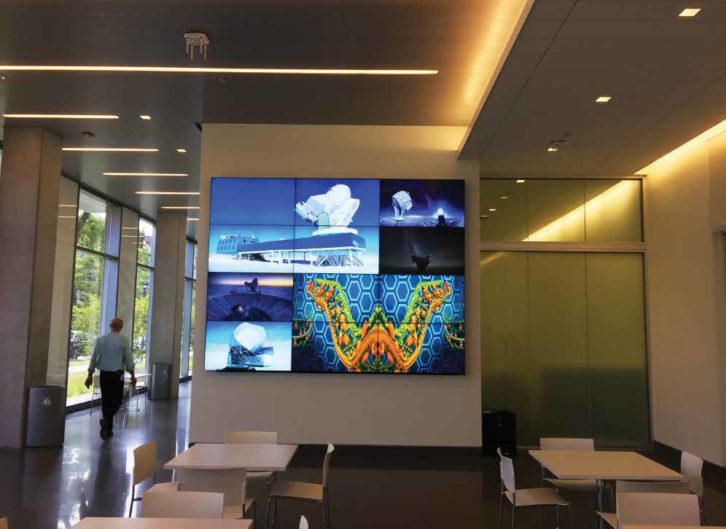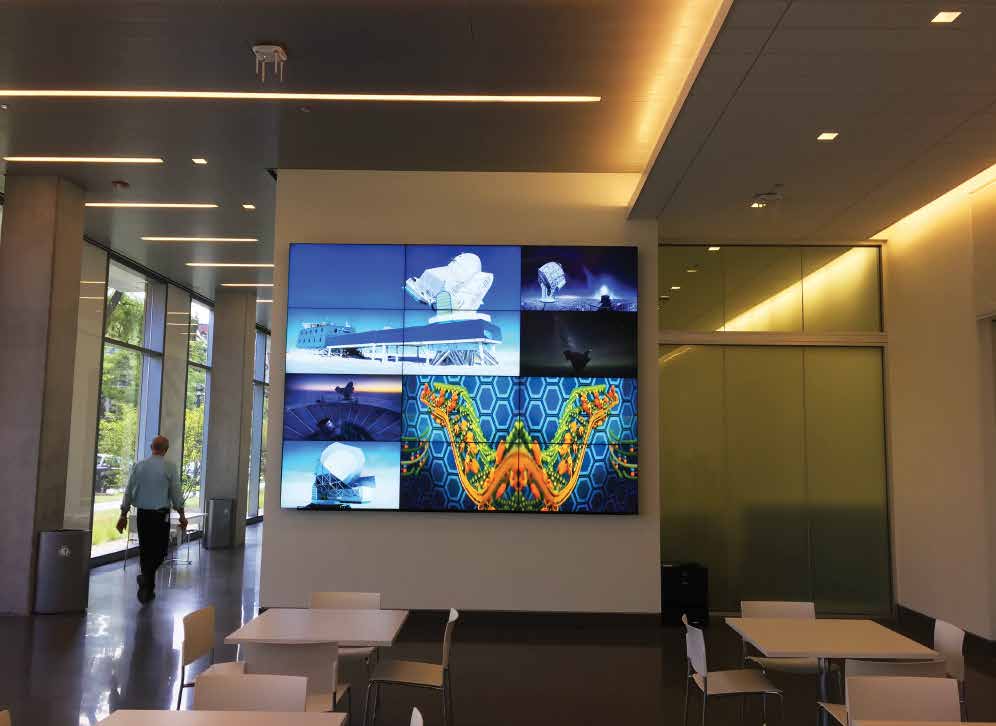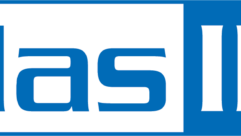

Look around. It’s no secret that video walls are ubiquitous in nearly every vertical. So what kinds of service agreements are required to keep up with the demanding use flat panels and mounts are subject to? How are unique configuration demands altering design strategy?
Many customers see video walls as an increasingly viable option to effectively communicate a wide range of visual information into commercial and public environments. “As equipment and integration costs continue to decrease, the technology’s ease of use is steadily improving, making adoption, integration, and the system’s subsequent serviceability all the better,” said Andrew Howell, senior account manager, Mesa Electronics.
Displays and mounts are becoming more inclusive, sometimes bundled as part of the package. “We try to package a solution together that looks at more than just the hardware, and is inclusive of the media players and content services,” said Kyle Balkcom, director of sales, Presentation Products. “While putting up a video wall is relatively easy, having the right management platform and having a plan to keep content fresh is important.”
Many manufacturers provide packages that bundle the displays and mounts, carts or portable stands to make the sale very easy, noted Rod Andrewson, manager of technology and quality control, CCS Presentation Systems. “We have used this strategy for certain applications. Usually though, we need to really engineer the mounting system standalones to be sure to provide a stable, cost effective, and visually appealing end result for the system. So the answer is in understanding the system needs and applying the best solution.”
“We bundle individual mounts and displays into serviceable systems and preventative maintenance is highly recommended,” Howell said. “The right mounting system design and hardware can help mitigate downtime and the cost of servicing your visualization system. Many video walls run for extended periods of time and are located in hightraffic areas, which increases the demand for a mounting solution that allows for fast access and ease of use.”

Mesa typically looks for several mounting system features to ensure ease of use during installation and routine maintenance calls. They include the presence of a quick mount-release pop-out mechanism, carriage extension force that can be adjusted to accommodate the weight of the display allowing the release to activate with gentle force, and a modular mount for unlimited video wall display configuration.
“We also look for tool-less micro-adjustments for uneven walls to create a seamless video wall display, pull-out/prop-open mechanisms to provide quick service access, and integrated cable management tiebacks,” he added.
Service agreements can be a bit challenging when it comes to video walls. “We really have to own the wall with the customer for the lifecycle of the system,” Andrewson said. “In most cases, we are creating a canvas to display our customer’s content; the uniformity of that canvas is always paramount in the visual outcome of the product. The displays must match from a visual output point of view, or at least be close enough to bring them into a match between all of the displays.”
That is where the service issue gets “sticky,” and a strategy to support the lifecycle of the video becomes a necessity, he added. “We have a multi-point strategy that includes a great relationship with the manufacturer, and a quality service staff to do any maintenance, minor repairs, and calibrations. We provide an extra display for every six displays in a wall. This has been the most successful strategy for us and our clients. All costs need to be known upfront, so don’t plan to sell a backup display six months or a year after the sale; there won’t be one available, and then it is too late. Remember, the canvas must be uniform, and without a plan to keep the same displays in the system, the end result will be very ugly and costly for the customer.”

“The demand for custom video wall configurations is exploding, and to successfully complete the process, there must be an incredible communication path set up between the customer, the integrator, and the content provider,” Andrewson explained. “The most important player in this market, from my point of view, is the content provider and their ability to successfully remain connected to the customer, the integrator, and the display technology.”
But the custom video wall market can be a difficult one, he cautioned. “We have a twofold strategy: great partnerships with the best content developers, and a great in-house or on-staff team that can handle questions and communications between all the players.”










